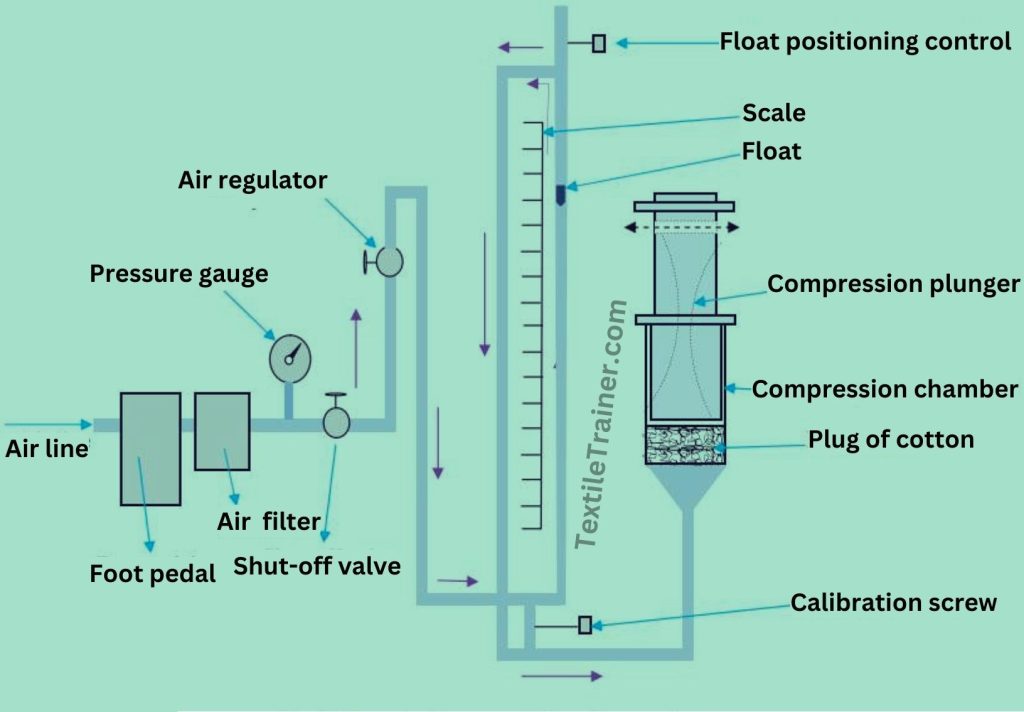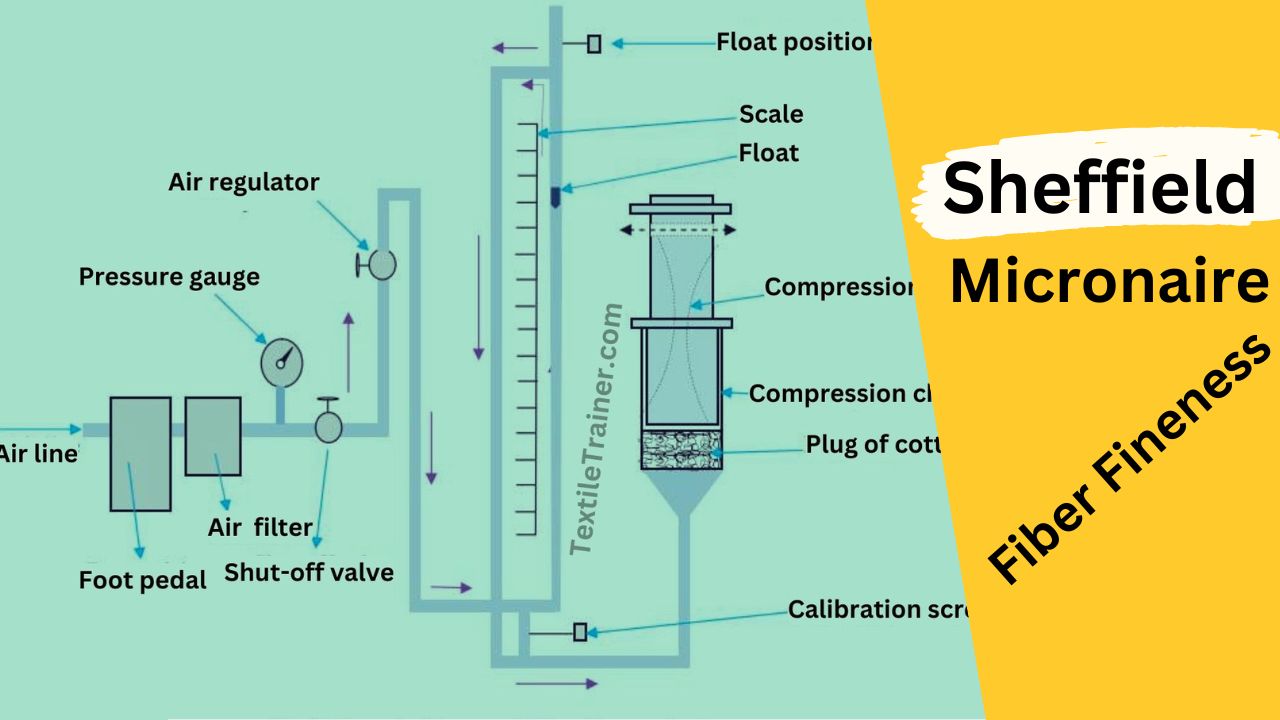Name of the Experiment:
Study on fiber fineness on air-flow method.( Sheffield Micronaire)
Introduction:
The cross sectional shape of fibers varies along their length and from fiber to fiber. Fineness is defined as the size of the cross sectional dimensions of the fibers. Due to the difficulty and laborious nature of cress sectioning, some dimensions can be determined directly and sometimes used as indicators of the fineness of cotton fibers. Fineness of fiber can be determined by a variety of methods. One of these methods is the air flow method. The following are the instruments which use the air flow principle to measure cotton fiber fineness.
- Sheffield Micronaire.
- ATIRA Fineness Tester.
- Arealometer.
In this experiment we will learn how to determined fiber fineness by using Sheffield Micronaire.
Objectives:
- To know about fiber fineness.
- To know about principle of air flow method.
- Come to learn working procedure of Sheffield Micronaire.
Principle of air flow method:
Samples of known weight are compressed in a cylinder to a specified volume, and an air current is applied at a specified pressure on them. This porous plug of fiber is used to measure air flow, with flow meters usually calibrated in terms of fineness rather than volume per unit time. For wool, microns are used, and for cotton, micrograms per inch are used.
Machine description (Sheffield Micronaire):

Air is supplied to the instrument by an air compressor through a foot-operated valve, an air filter, a shut-off valve, and an air regulator. As a result of this air regulator, the input pressure of more than 40 lbs/in2 is reduced to 4.75 lbs/in2, a measurement based on a mercury manometer. Fiber compression chambers are equipped with special master plugs. Afterwards, the instrument is adjusted so that the float in the flow-meter tube rises to an upper limit, as air flows through the plug, and to a lower limit, as air is restricted by placing the thumb over a hole. The float positioning knob and calibration screw are used to adjust the float. After this initial adjustment is completed, the master plug is removed and the instrument is ready for testing.
Fiber fineness rating table:
| Micrograms per inch | Rating |
| Below 3 | Very fine |
| 3 to 3.9 | Fine |
| 4 to 4.9 | Average fine |
| 5 to 5.9 | Coarse |
| 6 and above | Very coarse |
Test procedure for cotton:
- The sample of 50 grain (3.24 gm.) should be weighed very carefully with a good quality balance. A weight accuracy of ± 0.1 grain (6 milligram) is acceptable. Use a balance shielded against air currents, as they can lead to errors in the weight of the sample.
- Spread the fibers into a fluffy mass with your fingers, eliminating any knots or stringy sections.
- Place the sample in the fiber compression chamber.
- Insert the fiber compression plunger and lock it into place by twisting. This produces a fiber plug that is 1 in. in diameter and 1 in. in length.
- By pressing the foot pedal, turn on the air and take the scale reading at the point level with the top of the float to the nearest 0.1 scale unit.
- Then, press the foot pedal to turn off the air and remove the fiber compression plunger. Now press the foot pedal again. The sample will be blown out.
- Before inserting another sample, shut down the compressor with the foot pedal.
- Then we get the micronaire value of that fiber. Take at least five values.
- Calculate the fiber’s average value and rate it.
Calculation:
| Observation no. | Micronaire value | Average value | Fiber rating |
| 1. | 3.4 | 3.48 | Fine |
| 2. | 3.5 | ||
| 3. | 3.4 | ||
| 4. | 3.6 | ||
| 5. | 3.5 |
Conclusion:
We learned about fiber fineness from this experiment. We also learned how to determine the fiber fineness using the air flow method and how the Sheffield micronaire works based on the air flow method. We were thankful to our teacher for helping us with this experiment. This experiment will be of help to us in the future.
You May Read:

2 thoughts on “Sheffield Micronaire: Air Flow Method of Measuring Fiber Fineness in Easy Way”